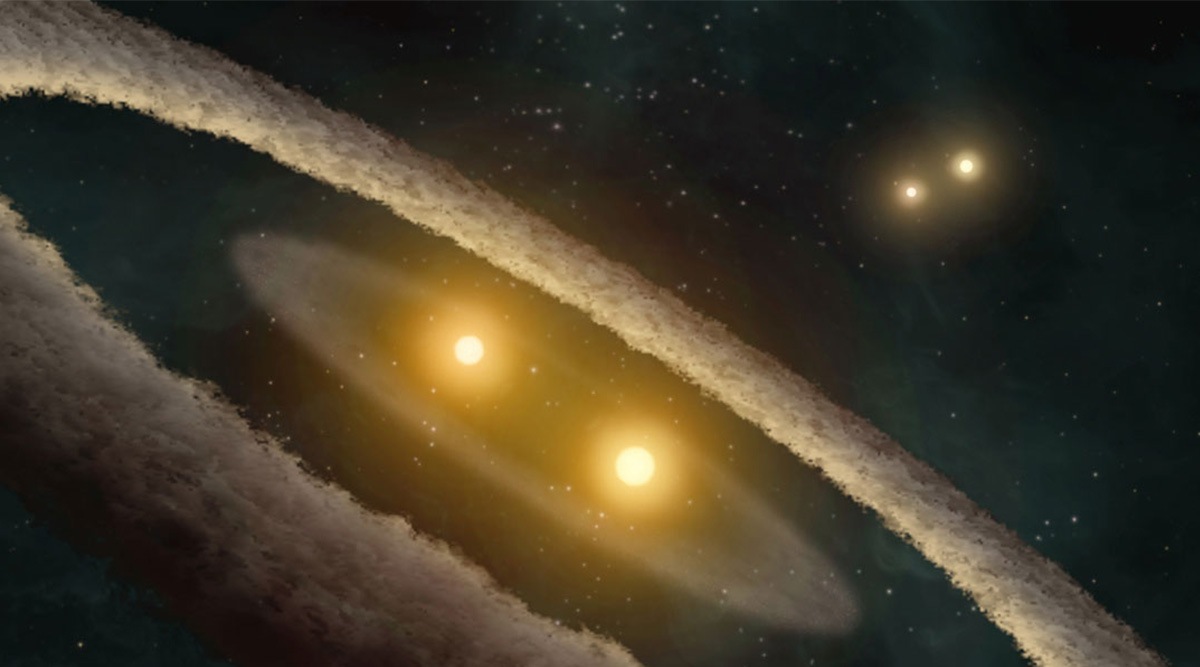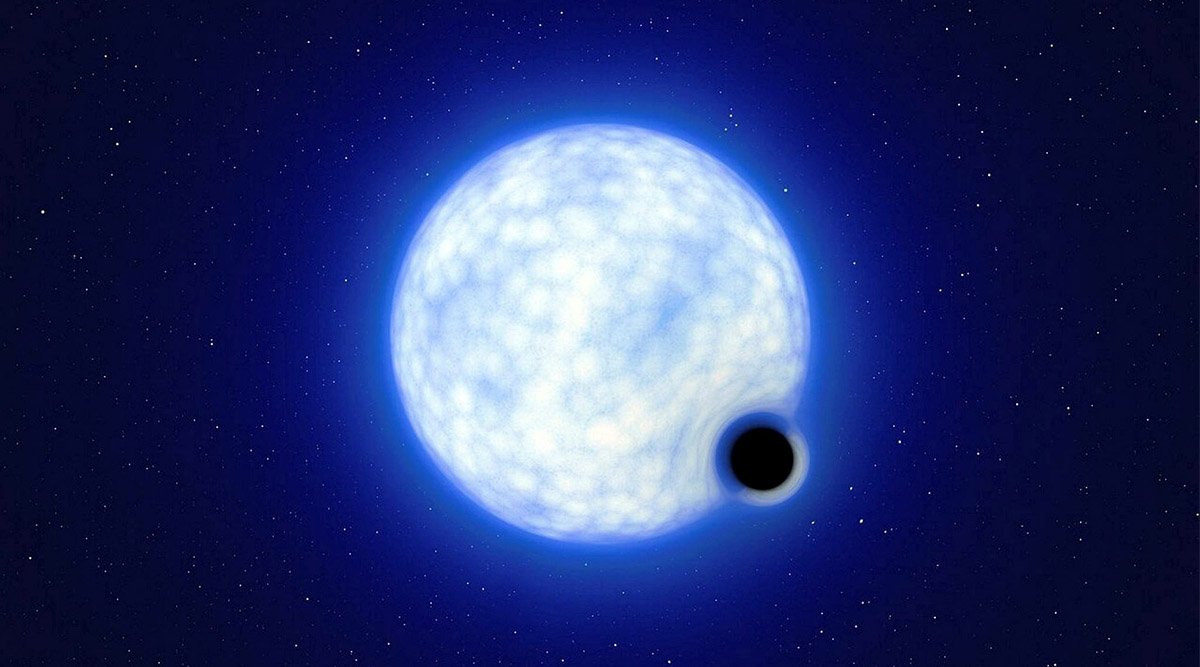Earlier this year, scientists at the Niels Bohr Institute at the University of Copenhagen announced the discovery of an unusual trio of stars. The system discovered by them consists of two stars that orbit one another and a third more massive star orbiting the pair. The research was published in the Royal Astronomical Society’s Monthly Notices in June.
“As far as we know, it is the first of its kind ever detected. We know of many tertiary star systems (three star systems), but they are typically significantly less massive. The massive stars in this triple are very close together – it is a compact system,” said Alejandro Vigna-Gomez, corresponding author of the study and postdoc at the Niels Bohr International Academy, in a press statement.
The binary pair of two stars dancing around each other at the centre of the system have a combined mass that is twelve times the mass of the sun. The binary also has an orbital period that is about the same time duration as one day on Earth. While the binary at the centre might sound like it consists of some massive stars, the tertiary star is around 16 times the mass of our Sun, making it even more massive.
The inner orbit of the system is circular in shape with the tertiary star going around the binary pair close to six times every year. This is really fast when you consider the size of the stars in the system. The very luminous system was initially thought to be just a stellar binary when it was first detected.
But then, a community of amateur astronomers found something a bit out of the ordinary when they were going through a public data set from NASA’s TESS (Transiting Exoplanet Survey Satellite) observatory. They saw some anomalies in the detection and as it turns out, what was initially thought to be two stars was actually three stars.
The researchers considered multiple possible explanations for how the system would have formed. And after over 100,000 computer simulations, they came to the conclusion that there may have been two binary systems that formed initially before one of the binary systems merged to form the massive tertiary star.
!function(f,b,e,v,n,t,s)
{if(f.fbq)return;n=f.fbq=function(){n.callMethod?
n.callMethod.apply(n,arguments):n.queue.push(arguments)};
if(!f._fbq)f._fbq=n;n.push=n;n.loaded=!0;n.version=’2.0′;
n.queue=[];t=b.createElement(e);t.async=!0;
t.src=v;s=b.getElementsByTagName(e)[0];
s.parentNode.insertBefore(t,s)}(window, document,’script’,
‘https://connect.facebook.net/en_US/fbevents.js’);
fbq(‘init’, ‘444470064056909’);
fbq(‘track’, ‘PageView’);







